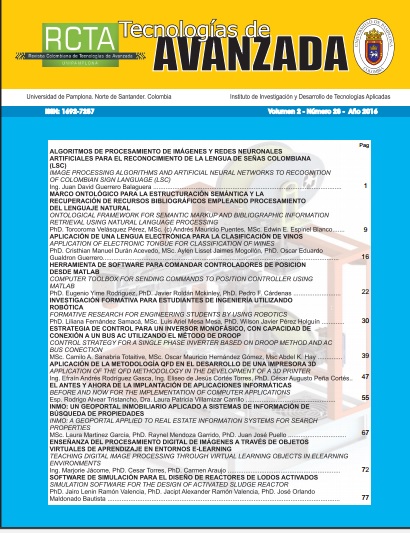Multidimensional simulation of heat transfer in an internal combustion compression-ignition engine
DOI:
https://doi.org/10.24054/rcta.v3iEspecial.881Keywords:
Ignition-compression engine, combustion, simulationAbstract
To perform the simulation of fluid flow, fuel spray and combustion in an internal combustion engine, the boundary conditions in the engine’s geometry require that a temperature be specified in the internal solid/fluid interface; it is difficult to measure experimentally. To obtain the borders' temperature values, a multidimensional simulation of a single-cylinder compression-ignition engine is performed, using solid walls in the Converge CFD software, with combustion and fluid/solid conjugate heat transfer. Considering that, the time scales of heat transfer in the solid are greater than those on the fluid, in the simulation the super cycling approach is used for the solution of conjugated heat transfer problems. 25 cycles are simulated for the engine, where combustion is considered using the rate of heat release as a function of crank angle, obtained from combustion with a kinetic mechanism for n-dodecane (C12H26). In the final cycle, when the heat transfer reaches the permanent regime, the temperature is obtained as a function of crank angle for the solid walls that make up the engine, which is used as boundary conditions in new simulations.
Downloads
References
Adrian, B. (2013). Convection Heat Transfer (4st ed.; I. John Wiley & Sons, Ed.). New York, Unites States.
Demirbas, A. (2008). Biodiesel: A realistic Fuel Alternative for Diesel Engines (1ra ed.; Springer, Ed.). Bergisch Gladbach, Alemania.
Gamboa, F. M., Flórez, E. G. S., & Conteras, G. G. M. (2019). Influencia de productos de la hidrólisis en el desempeño de un vehículo que opera con gasolina y gas natural en la altura. INGE CUC, 15(1), 89–98.
John, H. (1998). Internal Combustion Engine Fundamentals (1st ed.; McGraw-Hill, Ed.). New York, Unites States.
Kenneth Kuan-yun Kuo, & Acharya, R. (2012). Fundamentals of Turbulent and Multiphase Combustion (I. John Wiley & Sons, Ed.). New York, Unites States.
Merker, G. P., Schwarz, C., & Teichmann, R. (2011). Combustion engines development: mixture formation, combustion, emissions and simulation. Springer Science & Business Media.
Mirko, B. (2014). Principles of Heat Transfer in Internal Combustion Engines from a Modeling standpoint (Chalmers University of Technology). Retrieved from http://www.tfd.chalmers.se/%7B~%7Dlada/postscript_files/mirko-phd.pdf
Richards, K. J., Senecal, P. K., & Pomraning, E. (2014). CONVERGE (v2. 2.0). Theory Manual, Convergent Science, Madison, WI.
Spitsov, O. (2013). Heat transfer inside internal combustion engine: modelling and comparison with experimental data (Lappeenranta University of Technology). Retrieved from https://pdfs.semanticscholar.org/2b54/59b517da57a4d29c885fd0029cbc978e3c89.pdf
Taghavifar, H., Taghavifar, H., Mardan, A., Mohebbi, A., & Khalilarya, S. (2015). A numerical investigation on the wall heat flux in a DI diesel engine fueled with n-heptane using a coupled CFD and ANN approach. Fuel, 140, 227–236. https://doi.org/10.1016/j.fuel.2014.09.092
Torregrosa, A. J., Bermúdez, V., Olmeda, P., & Fygueroa, O. (2012). Experimental assessment for instantaneous temperature and heat flux measurements under diesel motored engine conditions. Energy Conversion and Management, 54(1), 57–66.
Wilcox, D. (1993). Turbulence Modeling for CFD (2nd ed.; I. DCW Industries, Ed.). New York, Unites States.
Yuanhong, L., & Song-Charng, K. (2011). Coupling conjugate heat transfer with in-cylinder combustion modeling for engine simulation. International Journal of Heat and Mass Transfer, 54(11–12), 2467–2478. https://doi.org/10.1016/j.ijheatmasstransfer.2011.02.015
Downloads
Published
How to Cite
Issue
Section
License
Copyright (c) 2020 Yesid Ortiz Sanchez, Elkin Gregorio Flórez Serrano, Raquel Irene Laguado Ramírez

This work is licensed under a Creative Commons Attribution-NonCommercial 4.0 International License.















